Food Allergies Storyline
High School Genetics Unit
Storylines start with an anchoring phenomenon that introduces a question or problem. Each step in a storyline unit is then driven by students’ questions that arise from the phenomenon. In this case, the anchoring phenomenon is something familiar yet still mysterious to this generation of students - bans of certain foods in their cafeterias and classrooms. Students will probably be able to connect the bans to food allergies, but might not be able to explain why a person has food allergies. The first day of the unit allows students to consider what they do and don't know about food allergies and what they want to find out. This gives them a reason for investigating the biological mechanism behind food allergies and intolerances. In doing so, they will make sense of Disciplinary Core Ideas related to genetics and genomics.
More Information

Lesson Plan 1
Why Can’t We Have Food In the Classroom?
High school students, as scientists, investigate food allergies to answer the following driving question: Why can’t we have food in the classroom? Students obtain information from a news segment, as well as from articles. Students record the important ideas and patterns that emerge from the readings and create an initial model to explain the difference between food intolerances and food allergies.
Time: Two 50-minute class periods
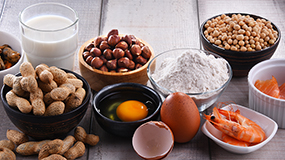
Lesson Plan 2
How Can We Figure Out the Different Ways Food Allergies and Food Intolerances Affect Our Bodies?
High school students, as scientists, investigate differences between food allergies and intolerances. Students watch a video and conclude that proteins seem to be involved in both cases. Students research food allergies and intolerances and develop a model to begin to explain what happens with the proteins in the body when food proteins are introduced. Students work together to create a model of what they might see happening in a typical human body when food is eaten versus what happens in the body of someone who is allergic or intolerant.
Time: Two 50-minute class periods
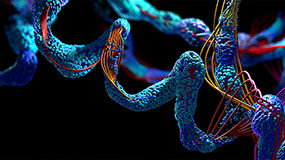
Lesson Plan 3
What Exactly Are Proteins, and How Are the Proteins We Make Different From Those We Eat?
High school students, as scientists, investigate proteins to answer the following question: What exactly are proteins, and how are the proteins we make different from those we eat? Students figure out that much of the food we eat contains proteins. Even things we consider carbohydrates, like wheat and other grains, have proteins. Proteins are things that our body needs to maintain homeostasis, and we get them in our food: Even if we are allergic to some proteins, we can consume other proteins. When we eat proteins, our digestive system breaks them into many different amino acids, and when our body makes proteins, our cells are putting together many different amino acids using the information on our genes/DNA.
Time: Two 50-minute class periods
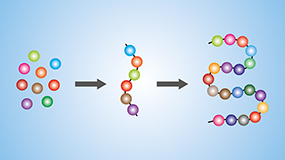
Lesson Plan 4
How Do Cells Know Which Amino Acids Go Together to Make Certain Proteins?
High school students, as scientists, investigate how new proteins are created using pieces of the proteins they ate to answer the following driving question: How do cells know which amino acids go together to make certain proteins? Students will figure out how genes are composed of a sequence of DNA that is then transcribed to RNA, which determines the sequence of amino acids that fold to create a protein with a specific structure. They will look specifically at the gene that codes for the enzyme lactase to trace the production and use of lactase in the digestive tract to figure out if the structure of lactase is important for its function.
Time: Two 50-minute class periods
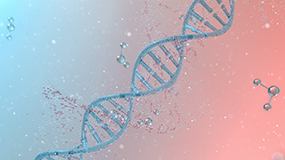
Lesson Plan 5
What Happens In the Cells of Some People That Causes the Structure and Function of Certain Proteins to Change?
High school students, as scientists, investigate protein differences resulting from changes in the DNA sequence to answer the following driving question: What happens in the cells of some people that causes the structure and function of certain proteins to change? Students interact with images, videos, and simulations to discover that a change in the DNA sequence of a gene can result in changes to the final protein's structure and function to varying degrees. This discovery can help explain what happened to cause some people to have lactose intolerance, and may also help them explain why some people have food allergies.
Time: Two 50-minute class periods
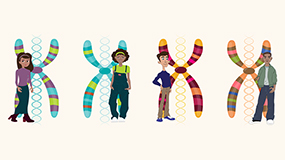
Lesson Plan 6
How Can Genetic Variation Lead to a Milk Allergy?
High school students, as scientists, investigate data from a study about food allergies to begin to answer the following driving question: How can genetic variation lead to a milk allergy? Students use information from their intolerance models, articles, and other work from previous lessons to develop a model that offers a possible explanation for how variation in the FAM117A gene could lead to a milk allergy. From there, students return to unanswered questions from their Driving Question Board and begin to investigate treatments for food allergies.
Time: One 50-minute class periods
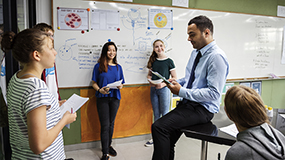
Lesson Plan 7
How Can We Share What We Have Learned About Food Allergies and Intolerances With Our Community?
High school students, as scientists, investigate questions of their choice about food allergies, the genetic mechanisms involved, and potential treatments for a DIY Exhibit that will be shared with their community. Students use information from their models, articles, and other work from previous lessons to develop possible explanations and treatment options. Students receive peer feedback and revise for public exhibition
Time: Three 50-minute class periods


